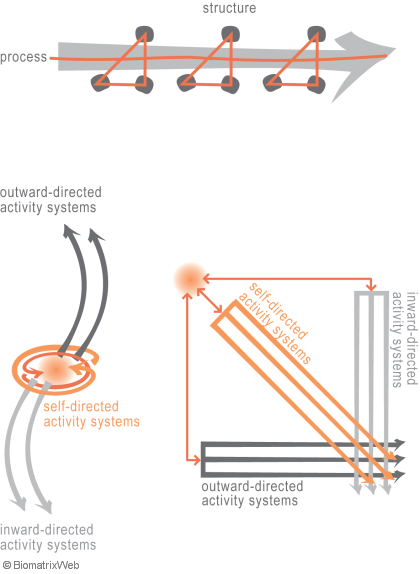activity system structure
The structure of an activity system is the configuration of the acting and support mei in space and time. Acting substance refers to the part of the structure that does the processing (e.g. the home cook, or automat in a cake factory). The support substance refers to the tools (e.g. equipment, recipe) and infrastructure (e.g. building, electricity supply) used in the processing.
The arrangement of the acting and support substance in space and time represents the structure of the production line. Restructuring refers to the rearrangement of the acting and support mei in space and time (e.g. rearranging the work stations along a production line).
entity system structure
An entity system consists of bundles of activity systems, each of which has its own acting and support mei.
The structure of the entity system itself is the pattern of interaction of its activity systems. For example, the structure of an organisation is depicted by an organogram which describes the interaction of its functions.
Because entity systems consist of three types of activity systems (i.e. outward, inward and self-directed activity systems), their interaction gives rise to a three-dimensional matrix. Thus, according to Biomatrix Systems Theory, a systemic learning organisation should be organised as a three-dimensional matrix.
relevance
Structure ensures stability of existence and regularity of behaviour .
relevance for the change manager
The structure of an activity system is largely responsible for the efficiency of process flow and the effectiveness of processing. These are the concerns of process redesign (e.g. business process redesign).
The structure of an entity system is responsible for the coherence of the whole entity system and the coordination of its functional parts. These are the concerns of organisational restructuring.
what is the relevance of this concept for you?





